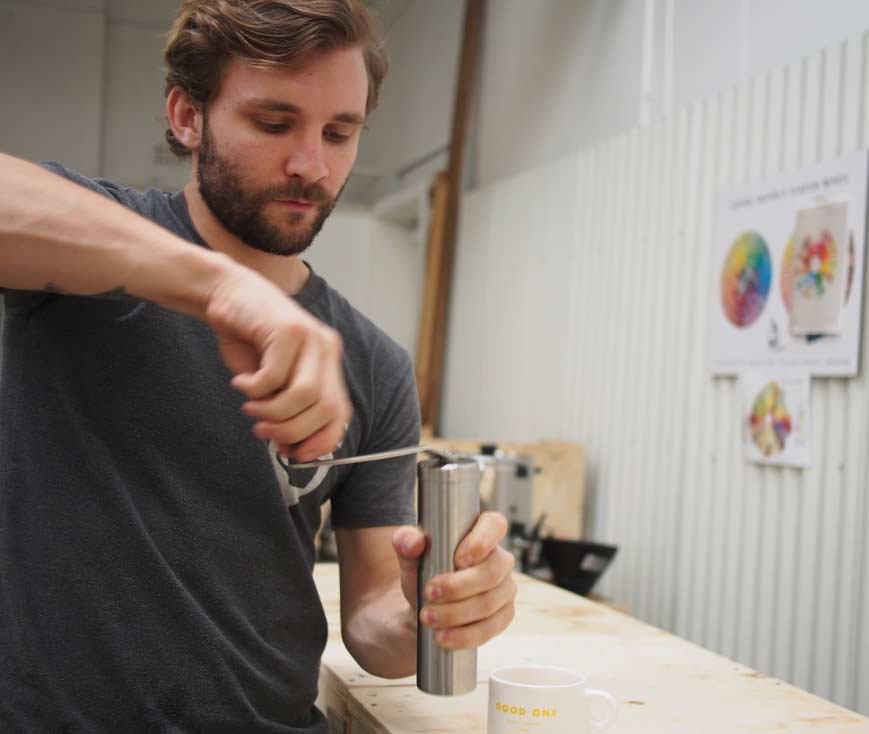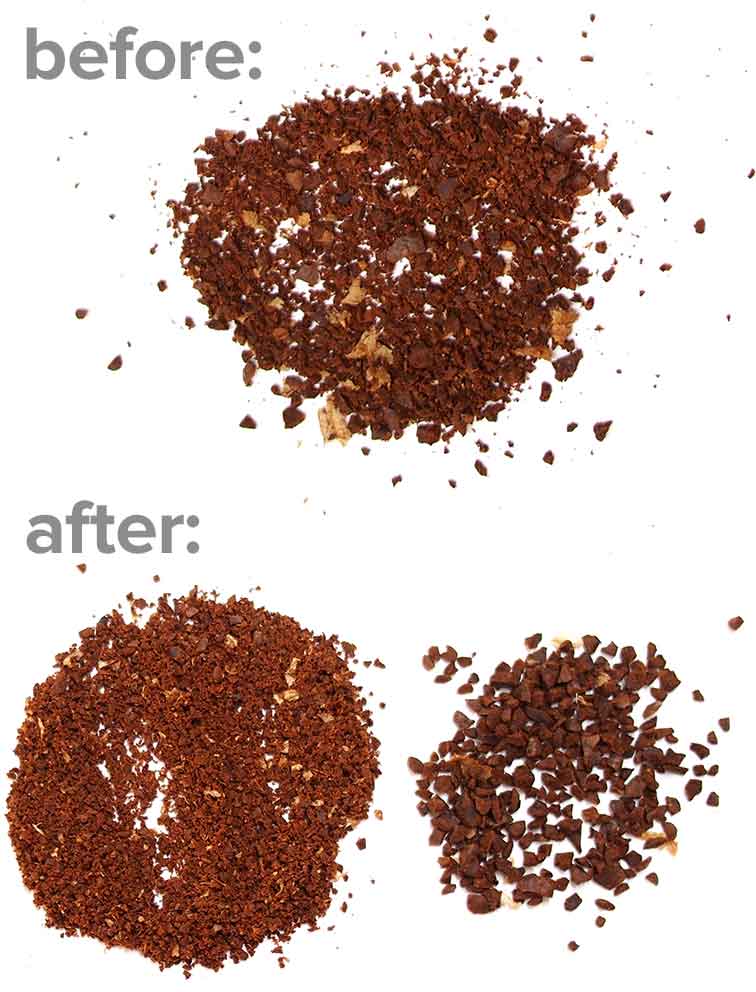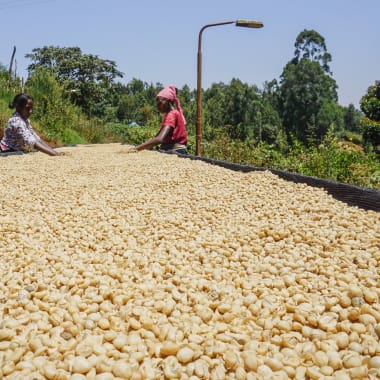The next most important detail in brewing is getting fresh and consistent coffee grounds to brew with.
Getting your hands on a good grinder and learning about grind size is the single fastest way to improve your coffee.
Seriously.
Fresh is best

When you brew coffee, it’s the oils in the ground coffee that are extracted into the water and make that delicious flavour.
The trick is, these same oils react with air too. That’s why we recommend you grind beans right before you brew them. When ground coffee is exposed to air the flavour fades within a few minutes, and changes dramatically within a few hours. Ground coffee in an airtight container is affected more slowly, but it’s still a noticeable change.
It’s easy to test this: when you’re grinding coffee, grind a second amount and leave it out (or try an airtight container) and leave it for a 3 hours.
Then brew a cup with it and you should notice the flavours flatten out: it’ll still have the flavour of coffee, but have less of the unique flavours we talk about in the tasting notes.
This is most noticeable with Brew Crew coffee releases, because they have more subtle flavours than our espresso blends.
Find the right grinder for your brew.
Grinders come in lots of shapes and sizes, but what you need to look for to brew great coffee is a burr grinder grinder.
Flat burr vs. conical burr
this means it uses two cone-shaped rings to grind the beans. This style of grinder gives you more control and consistency in the size of the coffee grounds.

You can get burr grinders from around $70 (for a Porlex hand grinder) up to thousands for a top-of-the-range cafe machine. Hand grinders like the Porlex or Hario mini mill are great for on the road or solo brewing, but if you’re brewing often or for others, it might be worth investing in an electric grinder unless you like an arm workout before your coffee.
Electric grinders
Like everything, electric grinders range from simple and cheap to tricked-out crazy machines that will do almost everything for you.
The home grinders we recommend are the Baratza range available online, and the Breville Smart Grinder Pro, which is stocked in most major electrical and department stores (and often discounted, so hunt around for the best deal).
What about this old spice grinder?
If you’ve been making coffee for a while, you probably recognise the “Coffee & Spice Grinder” — it’s the tall cylinder with little spinning blades.
The good news: these are great for freshly grinding spices to cook with. The bad news: they’re not great for making coffee.
Here’s why.
Consistent grind size is the key to great tasting coffee. The spinning blades in a spice grinder create a inconsistent grind: some giant pieces and lots of really small pieces. All these different sizes mean your coffee will extract unevenly, making it hard to brew a delicious cup every time.
The blades also create a lot of heat, which can burn your coffee beans.
If you’re wanting to brew delicious coffee, it’s time to retire the spice grinder from caffeine duties — but keep it around for making your own spice blends.
The size of your grind changes to match how you brew.
We mentioned earlier that brewing is extracting oils from the bean into the water. By changing the size of the coffee grounds, you’re changing the amount of surface area from which the water can extract the oil.
Smaller pieces take less time to fully extract than larger pieces: the smaller grind means more surface area, which means more oil is extracted.
Espresso grind: table salt
For espresso and stovetop brews, you’re applying a lot of pressure in a short time, so you’ll need a fine grind in order to extract the most oil quickly.
Plunger grind: beach sand
If you’re brewing using a plunger or French press, you’ll need a grind that’s between espresso and filter.
Filter grind: coarse beach sand
For filter brewing or pour-over coffee, you’ll have a much longer brew time so your grind needs to be more coarse so it extracts more slowly.
Adjusting your grind
If your brew is tasting sour, it’s probably under-extracting the coffee. If you grind more finely, it’ll take longer to extract and there’ll be less bitterness.
We’ll cover a more in-depth way to adjust the flavour of your coffee in the final part of Brew Like a Boss.
Consistent grind size is important in making delicious coffee.

Chances are whatever grinder you use for your coffee, you’re going to end up with freshly ground coffee that ranges in size from teeny-tiny fines to chunky boulders.
The easiest way to try this out for yourself at home is hiding in your kitchen drawer. That’s right, it’s time to dig out the kitchen sieve.
Grind a little more coffee than you usually need, then gently pass it through the sieve into a bowl underneath. The sieve will catch the bigger sized pieces (called ‘boulders’) and you’ll have much more consistent coffee grounds sitting in the bowl underneath. Keep going until you’ve got the right weight of coffee in the bowl underneath.
In the photo above, you can see the original grounds above, and the results after sieving below, with the boulders on the right.
There’s even a new product called Rafino on Kickstarter if you want more precision.
Try brewing a coffee with sieved grinds, and one without sieving, right after each other and note the differences you taste.



